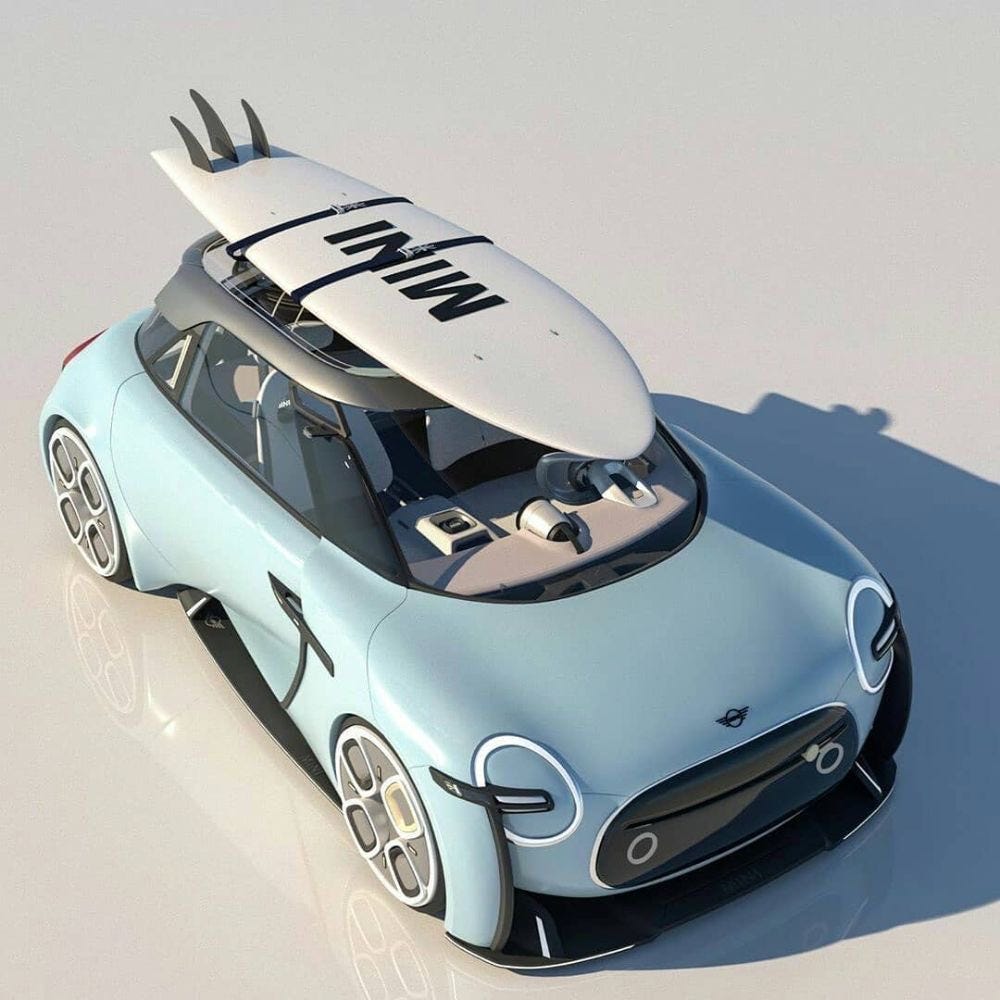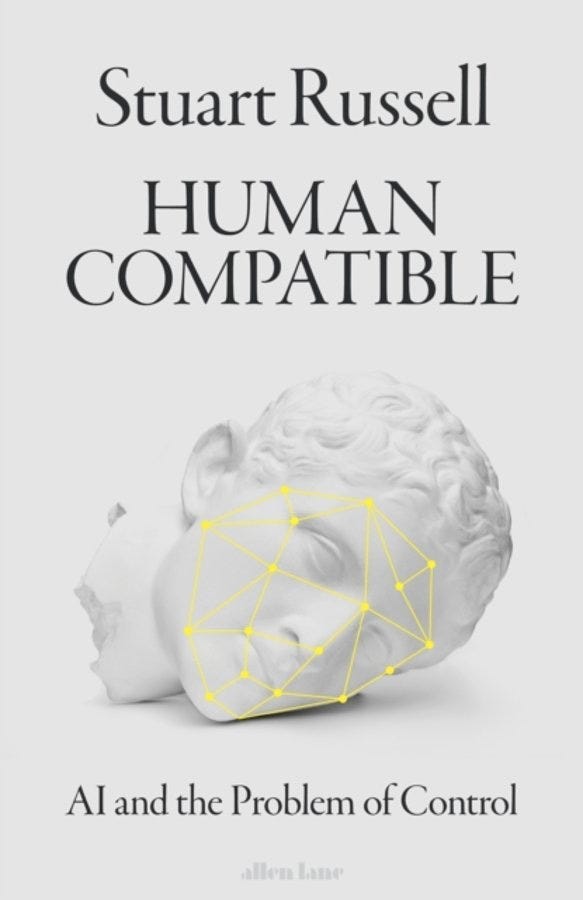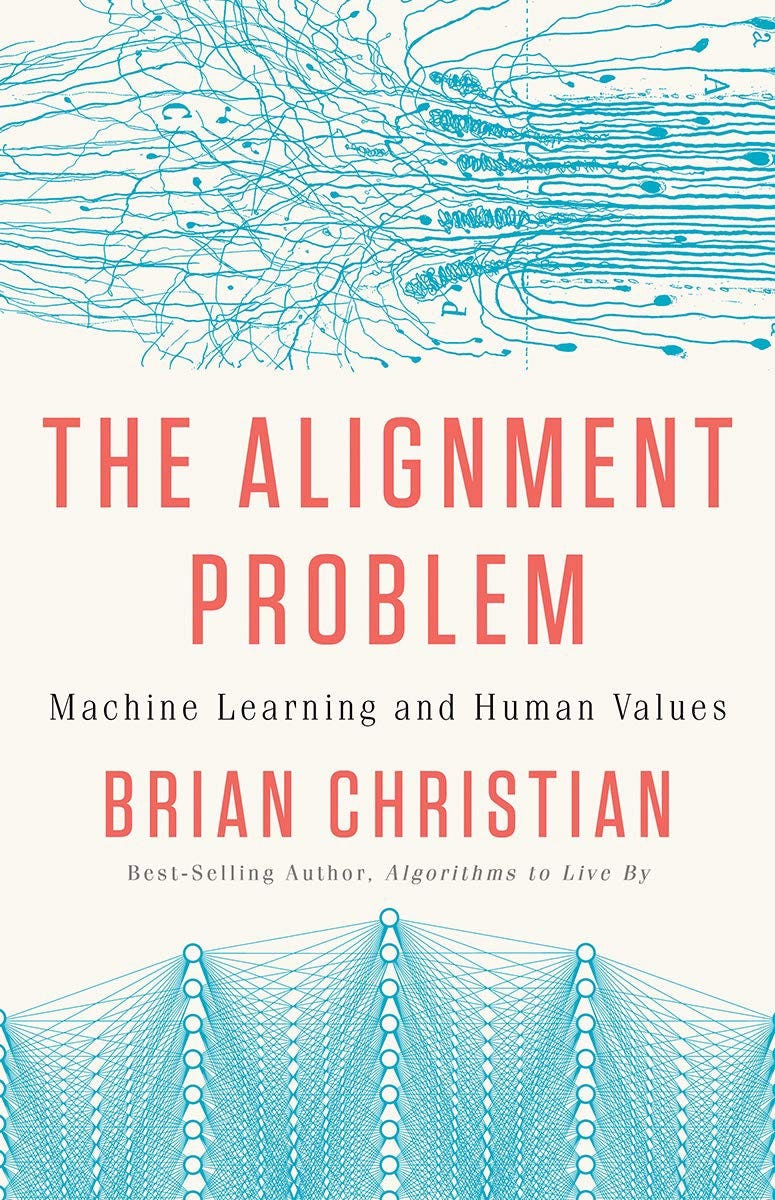2050 is not far-off, after all
Addendums to Erik Hoel’s must-read predictions for 2050
(I originally published this essay on Medium as a 2-part series in November and December 2021 in response to Eric Hoel’s Substack post Futurists have their head in the clouds. This version compresses the two parts into one and includes only minor grammar and spelling corrections)
Nov 9, 2021
Last week, because the internet is brilliant, or more precisely because the team at Protein Journal does an incredible job curating their monthly newsletter, I happened across Hoel’s substack article ‘Futurists have their heads in the clouds.’
So that you’re well and good up to speed, I would suggest popping over to read his article before continuing with mine. (And also, of course, because I can be quoted saying, “If you only read one thing this year, let it be this article.” Bold.)
Should you have chosen to read two or more articles this year (even bolder) see the following as my contribution to the reading group for points 1–8, next week I will address points 9–18.
Predicting the Future
Hoel starts by perceptively noting that the rest of us have stopped being perceptive. Namely, 2050 is as far away as 1992. For those of us who were alive in 1992, his remark reminds us to wake up, and do the math. (Or “you do the math” for comedian Chris D’Elia fans). 2050 is just not that far away.
2050, that super futuristic year, is only 29 years out, so it is exactly the same as predicting what the world would look like today back in 1992. (Hoel, 2021)
And I should know, given I’ve been alive 29 (and only 29) of those years. Wherein, despite Moore’s Law, the inventions that have emerged in my (memoried) lifetime could have easily been predicted by following the trends.
What was most impactful from 1992 were technologies or trends already in their nascent phases, and it was simply a matter of choosing what to extrapolate. (Hoel, 2021)
When folks ask about my research, folks who are not as deeply entrenched in technology (read: the future) as I am, I often show them the 1998 work of filmmaker Frans Bromet. While it’s in Dutch, anyone who has lived through the 90s and has been told “heeft u een mobiele telefoon,” means “do you have a mobile phone,” will be able to extrapolate that folks are not so sure about the idea of being reachable at all times. Saying things like “I’m certainly not so important as to need to be reached at any time.”
In under two minutes, most of the nay-sayers, who are simply well-intentioned (and mostly under-informed) Luddites are disarmed for they know all too well what happened: we all got smartphones, are glad no one calls us on the landline, and for the most part, we like this change.
But I do not want to invalidate folks' concerns. In fact, we should all be more familiar with the history of the Luddites, for their concerns, should be our concerns.
In her book 12 Bytes, Jeanette Winterson reminds us of the true origin of the term Luddite:
The Luddites of the early 19th century were not against progress; they were against exploitation. The 1812 Frame-Breaking act made damage to a power loom punishable by death. Luddites were not risking their lives to return to some sentimental rural Arcadia, but to earn enough to feed their children. (p. 39)
And so while it is a matter of digital literacy to understand that new technology begets new technology, silencing the hope for improved circumstance over what Winterson calls “new world order, capital, and property” is as ill-advised as it gets, of course.
Instead, I center my projections for the future on the past, as does Hoel,
If you want to predict the future accurately, you should be an incrementalist and accept that human nature doesn’t change along most axes. Meaning that the future will look a lot like the past.
as does Winterson…
We need to learn from the past. That's what the past is for. (p.34)
Part One: Technological changes
Space Exploration.
Hoel’s Take: There will be a Martian colony.
My Add: More people will be in Space.
Hoel is correct, “extrapolating the incredible progress in the private space sector over the last decade…there will be an established and growing civilian presence on Mars.” Where I would like to add some more resolution to the prediction is around whether society at large is excited about this. Especially when those likely to be enabling this reality are polarizing characters (welcome Musk and Bezos to the chat).
In addition to the science, construction, and/or tourism Hoel points to, there will also be discussions down on Earth about the mere act (and cost) of settling on a new habitat.
As construction in space turns to mining, temporary habitats turn to ostensibly permanent ones, and both governments and corporations begin vocally splitting hairs about land ownership (the 1967 Outer Space Treaty withstanding) folks on Earth will begin taking sides. Not everyone will be excited.
There will be questions about terminology and the implication of concepts like ‘occupy,’ ‘colonize,’ and even ‘settle.’ And realizations about the technical support on Earth needed to viably sustain such initiatives.
Material resources will also be a huge concern when it comes to space travel. Namely, the fact that getting to space is wildly taxing on the environment. Folks will be divided between those who think Mars exploration is in conflict with increasing environmental volatility on Earth and those who see Mars as a requisite backup plan deserving of Earth's limited natural resources.
Commercialization of (All) Data.
Hoel’s Take: The marketization of everything.
My Add: The data-fication of everything.
So in case you haven’t heard, spatial computing is on its way. That means more extended reality and more ambient intelligence. This means virtual reality gaming will become customary — which Facebook (now Meta) made a big claim on in their most recent annual conference, Connect. But another kind of extended reality, namely augmented reality, will be the true data aggregator. Augmented reality will be near-ubiquitous in 2050, in the form of glasses. (If you don’t believe me, I direct you again to the video from 1998 above).
Everything you look at (and I truly mean look at as there will be cameras looking directly at your eyes to contextualize where you are looking) will be captured, and because of the improvements in computer vision, what you look at will also be categorizable. Didn’t read the email, but you said you did, the AR glasses will know. (But not know in any sentient sense, intelligent artificial intelligence is still very much fiction in 2050).
And all of this data. Well someone will own it.
The early 2020’s will bring Decentralized Identifiers (DIDs) to the web. With this, came a conceivable way to own your data (and privacy)— and to choose to whom you would sell, lease, loan, etc. your data.
And yet, being the broker of all of your own data has brought new problems. Firstly, there is too much of it. You will be overwhelmed by the number of considerations you will be asked to make, and when you have the (financial) privilege to do so, will prioritize convenience over decision-making (think of financial advisors advising you instead on who is trustworthy of using your data). Secondly, a clear inequity will arise, those who have no other means will sell their data (and attention) simply to survive.
Commercialization of (All) Data.
Hoel’s Take: AI will be the most futuristic impactful change in day-to-day life.
My Add: The line between automation and artificial intelligence will remain blurry.
Despite the calls of folks in the computer sciences to please stop calling AI, AI (they preferred the technical term machine learning) as it implies a level of intelligence that is incredibly misleading. The term Artificial Intelligence will stick. And much like how few in 2020 knew why restarting a router made the internet work again, few will understand what AI truly entails. Therefore, simple automation will continue to be perceived as AI (a light turning on when someone enters the room, for example), while true machine learning will grow leaps and bounds out of the eyes of the consumer marketplace.
Whatever it is called, it will be ubiquitous. And the mundane, routine tasks of the early 21st century will be largely automated. Indeed, Hoel forecasts correctly many jobs will be lost:
White-collar workers, like tax attorneys, lawyers, and programmers. (Hoel, 2021)
But perhaps this is not such a loss,
Getting rid of what the great econimist and anthropologist David Graeber called ‘bullshit jobs’ is nothing to mourn. What we need is economic fairness. (Winterson, p. 51)
Hoel suggests, “the worst hit will be artists like writers, painters, poets, and musicians, who will have to deal with a total saturation of artistic content by AI.” I don’t disagree, but want to add some depth. Namely, creativity is challenging to quantify. And in 2050, we will still be bound to what Ada Lovelace knew to be true in 1840 (though folks will be actively working to unbound this limitation).
The Analytical Engine has no pretensions to originate anything. It can do whatever we know how to order it to perform. (Lovelace, 1840)
Essentially, knowing how to order machines to perform creativity is still hard.
We can, and should, learn how a poem works, because that increases our pleasure in it, but emotional hit is odd and harder to pin down. The hit is like the ghost in the machine — we can see how the poem is made, but the elusive sprite-like thing refuses to get in the bottle and, well, be bottled. (Winterson p. 29)
Stimuli Economy.
Hoel’s Take: The supersensorium will grow in power.
My Add: Calm and the un-augmented will increasingly be for the rich.
Hoel could not have said it more precisely,
VR addiction will be much more impactful than the ill-defined notions of “internet addiction.” (Hoel, 2021)
What was missed is that that predicament will not befall the rich who understand that plugging into the metaverse rarely to come out is some kind of hell on earth. The multiple private attempts to purchase Esalen and the myriad of no-tech private schools in the Valley, for example, show a clear trend to guarding oneself and one’s children from too much stimuli.
[The metaverse] takes us away from what fundamentally makes us happy as human beings. We’re biologically evolved to be present in our bodies and to be out in the world. — John Hanke, Niantic CEO
Instead, those with the resources will opt for a minimalist AR or fully ambient intelligent levels of technology. Those who can not afford such a lavish lack of technology will rely on digital worlds increasingly for calm.
Anticipated Needs Alters Shopping.
Hoel’s Take: A mostly storeless society.
My Take: Sensors radically change shopping patterns.
You want a burrito for lunch? There’s an app for that, and you’ll receive it tin-foil wrapped and still warm via drone or human carrier in ten minutes. (Hoel, 2021)
But the question is, will you really purchase based on your wants, or will it be more likely that your whole meal plan is coordinated for the week based on analysis of data from your wearables, smart fridge, and bank account? In aggregate, your data will be able to increasingly predict and plan your need to purchase anything. Running out of toilet paper: thing of the past. Wondering what foods cause an afternoon dip: thing of the past.
But yes, when you are craving literally anything a drone can carry, it can likely be to you in under 10 minutes. Want something from your favorite bakery on the other side of the country, you’ve got it! (Though maybe not in under ten minutes).
In-Person Learning for the Elite and Kids Under 5.
Hoel’s Take: Education will take place mostly online.
My Add: In-Person Learning = Prestige.
While the understanding of the importance of in-person interaction for the socialization of young children, development of fine motor skills, and lifetime performance outcomes only increase, the notion of post-secondary education being in person will be wildly reevaluated.
The notion of spending 18–22 at living on campus will be considered an anachronism or a wasteful indulgence of the rich. (Hoel, 2021)
And indeed, the institutions that do remain for in-person learning, will be the tenured-prestigious ones, and will be as much a social club as a learning institution. They will be able to do this based on a long legacy of hiring one another.
Gene Editing is Prominent.
Hoel’s Take: Genetic engineering of embryos to avoid disease will have become common.
My Add: Medical ethics will transform to accommodate these changes.
Superficial genetic upgrades for babies (heterochromatic eyes, for instance) will be a trend among the super rich or pop stars. However, there will be no genetic engineering that improves the fundamentals of human traits like intelligence or athleticism or even anything like attractiveness above and beyond all-natural humans — the available technology will still be focused solely on avoiding downsides, like genetic diseases or disabilities. (Hoel, 2021)
Like any science, there will be folks who push past the established ethical boundaries of the time “in the name of science.” Gene-editing will make it challenging to resist experimentation.
Unfortunately, the Cherry Pit I have always dreamed of having as a pet will still not be available for purchase.
Youthful Glow.
Hoel’s Take: Anti-aging technology will extend the health-spans of the rich.
My Add: Social media breaks down gatekeeping and tricks of the rich are shared.
(Baby) Botox has become standard (especially given its proven correlation with decreased rates of depression and tension headaches from squinting at screens). Social media has democratized access to the beauty rituals of the rich. The ability to look young, formerly had only by those with celebrity facialists, is common knowledge across the general public.
Already it is quite obvious that people at the top are not aging in the way they used to. Jennifer Lopez, Paul Rudd, and The Rock are classic examples of celebrities over 50 — even our president, Joe Biden, is unimaginably old for a president in the 19th century. (Hoel, 2021)
Dec 3, 2021
What’s the time-equivalent idiom for “your eyes are bigger than your stomach?” Whatever it was, mine were. So now that three PhD applications, and a journal paper, and a portfolio update are behind me, I return with part two of two of, ‘2050 is not far-off, after all.’
A quick catch-up, in November Protein Journal included a link to Hoel’s substack article ‘Futurists have their heads in the clouds.’ It is a list of 13 predictions about the future. The essay made my jaw drop; if you see the array as a kind of compass, Eric Hoel is headed due north.
These are my contextual additions to points 9–13. (Haven’t read either article? You’ll be fine, but I’s consider giving Hoel’s article a spin for reference.)
Part Two: Demographics and Politics
Aesthetics/Standards of Digital Living.
Hoel’s Take: Huge improvements to standards of living.
My Add: No more screens, more curves and pastels (for those who can afford it).
Hoel got it right in simply saying, “Everything will just get nicer.” And if you’ve got the cash (or crypto) he’s right, A/V systems, high-quality food, ambient intelligence, and autonomous vehicles will continue to get better and more ubiquitous.
Siri is now also in the garden and can play your favorite podcast as you are planting decorative kale; no need for an actual vegetable garden; food deserts aren’t in your neighborhood. You are a member of your local Whole Foods vertical-urban-farm (it’s the modern equivalent of a CSA box). But unlike the days when you picked up a beaten-up cardboard box from the local farmers market only for half of the veggies to go bad cause you didn’t know what to do with them, now you’ve got a personal digital ecosystem that keeps this from happening. Your AR glasses or contact lenses ensure that you pick only the food that is nutritionally aligned with your unique needs.
Your smart home and appliances work in tandem to show you how to store and prepare new ingredients, making sure you not only cook that mushroom risotto to perfection but also ensure the leftover crickets don’t go to waste whilst lying in a forgotten drawer in the fridge.
But the aesthetic will be more effortlessly soft than either Hoel or this terribly inaccurate aesthetic from Hoover predict. Looking at car concept designs starts to paint a portrait of this…
I mean, sure it’s a bit cartoony. But do you want this or a G-Wagon driving towards you in a Level 5 autonomous driving zone?
Plus, screens will be almost completely phased out of non-work life, so designers can return to softer lines. Minimalism a la Apple will still be chic (and they will stay the leading player in defining the aesthetic) because minimalism is a privilege of the rich, but a sense of ‘natural’ curvature, or at least a ‘return to how it used to be’ will be included. Think along these aesthetic lines…


The contrasting aesthetic will indeed be what Hoel calls the “polygonal Tesla aesthetic.” Which will look something more like this, still natural, but make it brutalist…


Women, Families, Gender, and Partnerships
Hoel’s Take: The future really is female. … Families will continue to decline in importance. … The rise of the throuple.
My Add: Hoel’s points 10, 11, and 12 are most salient when collapsed into one concept and gender is brought in.
As of now something close to ~60% of all college degrees go to women: by 2050, it will be well above 70% (although this will be decentralized from traditional colleges and universities, as discussed earlier). And while women’s salaries are not as high on average as men’s now, this has already switched in urban areas, which is generally a predictive indicator, and therefore women’s wages in the workplace will indeed be greater than men in terms of their salaries by 2050. Just as the invention of the teenager as a consumer category reshaped popular culture, the ever increasing rise of independent women with disposable income will reshape society, from what entertainment is produced to who is an elected official.- Hoel
This is critical ^.
When women become both the dominant consumer and producer/creator, what happens indeed? As a woman, I am dying to know. (And I feel lucky I will get to see.) But from where I am and where the women I know, read, and listen to are…this means three things change off the bat:
Partnerships
Child rearing
Gender
Here is where I think Hoel misinterpreted the rise in single parents in Denmark (or his extrapolation to other circumstances). Instead of a rise in single parenting indicating “a near majority of children will be being raised in single-parent homes by 2050,” what the data simply indicates is some trend in the disappearance of men from especially young children’s lives. My guess. No one has taught them how to be good parents (or to care for anyone really, including themselves), no one has taught them to be good partners (and the lack of legal dependency women have on their male partners means that if you’re not a help, perhaps you’re better off not being a burden?), and finally, gender constructs no longer work (any adults acting as caretakers need to be able to do just that, caretake).
Most certainly, the idea of not wanting children will become less taboo. More speculatively, the possibility of women having biological children together will be in sight, if not already occurring.

Perhaps this trend in paternal abandonment could reflect a future where “the state will necessarily become more socialist in terms of childcare,” it might also reflect new ideas around child-rearing. Community-based, and yes, increasingly the thruple, or more likely relationship anarchy polycules, may change this trend by centering children in more active, but distributed ways than the history of late-stage capitalist monogamy has allowed.
Majority-Minority or Minority-Majority
Hoel’s Take: A minority-led country.
My Add: … but how different will it look?
This trend of outperformance by minorities in the upper echelons of society like at elite universities, major corporations, and in creative endeavors (books published, movies starred in, etc), will continue and intensify — even just by demographics alone 2050 America will itself be majority non-white. -Hoel, 2021
This prediction is incredibly challenging for me to address as a white-presenting Latina. While a lot changes when white people are not exclusively in power, history does not reverse itself overnight. The imprint of values, processes, and beliefs takes generations to adjust within our systems. Changing the demographic breakdown of power is critical, do not get me wrong, but changes might be slow to come (though come the will), especially if AI has anything to do with it.
Read either of these books if you want to understand how oppressive bias could be codified before this demographic switch occurs…
(Online) Geo/Politics
Hoel’s Take: The world will not war. … Soft totalitarianism will make the West more like China. … The age of the mob will spur domestic turmoil.
My Add: I can not speak to the first prediction (despite my JSA alumni status)… but in the race to ubiquitous computing and the spatial web, the tech savvy will come out on top, where who decides what ‘top’ is what is whose on top. In this way, I thought it important to collapse Hoel’s points 14–16.
While, who can’t predict war (I mean, I’m sure that’s what the militaries around the world are paid to do), a trend I think we can predict is a continuation of discreet border changes. And land grabs in the metaverse, of course (will war wage there instead?)
It has become too technologically easy to steer the ship of the culture with the rudder of social media, and putting a hand on the rudder is irresistible for political parties. So there is nowhere to go but toward China, toward stricter speech laws and codes, toward state observation and censorship and policing of debate and ideas. -Hoel, 2021
So, I agree, but for a slightly different reason. Hoel’s vision presumes malicious intent and forethought. I see it differently. And, this is just my hot take, but China (with South Korea and Japan close behind) will create digital governance best practices that the US and Western Europe will happily adopt. Not just because the conversation is desirable by governments, But to be quite frank, when I look at governments like the Netherlands, one has to ask, does anyone in government actually know where they’re headed? As Hoel points out well, “Western political parties are like two people in a fight who have both seen a gun lying on the floor and are in the process of leaping to wrestle for it. There is now no chance it does not go off.”
Instead, I think this aptitude trend toward governments’ pervasive intervention in digital infrastructure will have much more to do with digital literacy. And at the governmental level, digital literacy will only be had by governments who ‘got into tech early,’ if you will. All the evidence you need is in the fact that no one knows what to ask Big Tech at congressional hearings and that WeChat only shows three ads max a day. You tell me which government is prepared for smart cities of the near-future.
Social media will ensure an endless culture war and internal social upheaval. … Many people will undergo public shamings at some point in their lives, creating a divided and bitter underground of quiet dissidents and lower caste citizens. Society will be extremely sensitive to heresy, with what constitutes heresy shifting continuously so as to reliably signal social virtue and status in massive online social networks in which it is difficult to gain prestige in other ways. -Hoel, 2021
This is a bleak part of the future, and one that, to continue the war metaphor, we should arm ourselves against. But how? No seriously, how?
When I talk to my friends with children about raising their children not just for any future, but this very specific upcoming one, I wonder in astonishment at our collective lack of preparedness. The 20th century readied us to be ‘present-parents’ who don’t use either the threat of or actual physical violence to raise children. These are wonderful tools, but not sufficient to keep teens from bullying one another on the internet, apparently.
Boredom
Hoel’s Take: People and culture will become boring.
My Add: … this is one of those blessing-and-curse dilemmas.
Being boring will become a survival trait. And look around. It already has. All socially risky behavior is on the decline, and has been in the decade since social media and the introduction of the smart phone. -Hoel 2021
So the guy who made the infinite scroll is upset with us, no one can sleep, and people’s dopamine is already all out of whack. Income inequality is egregious, people are getting vocal about late-stage capitalism, and in the very thick of the storm, people are also outing that they just want to be comfortable. Aka, maybe boring is not so bad if your basic needs are consistently met.
Which then makes Hoel’s prediction that, “creativity will decline in correlation,” more of a philosophical stance; one that implies creativity is an indication of a flourishing, happy population. Is it? I guess we will find out…
Our final predictions
Hoel: It will be the winter of my life.
I will have made any scientific discoveries I will ever make. I will have written all the books I have inside of me, left hollow like an exhausted mine. -Hoel, 2021
Me: It will be the summer of my life.
Here is where Hoel and I have no alignment. (Which seems about correct as we are not the same person.) Rather, the idea that in 2050 I will be empty sounds like the furthest thing from the truth I can imagine, for myself.
In 2050 I will turn 58. That will be a whole year older than my mother was when she died of a cancer which medicine-of-the-future likely wouldn’t have missed. And my mother, she was just beginning: her first book, nearly done; a career that was increasingly compelling and aligned; even new love. At 58, I will be reticent to see summer leave, but prepared for the eventuality of the decay that fall brings, but still terrified for winter and its finality. I will laugh with folks my age about how “kids these days” neither know the mime for a rotary nor home phone, I will be scared about new things I could have never forecasted, and say, “see, I told you so,” to others. But’s don’t we all.
With that, praying for a hospitable future,














